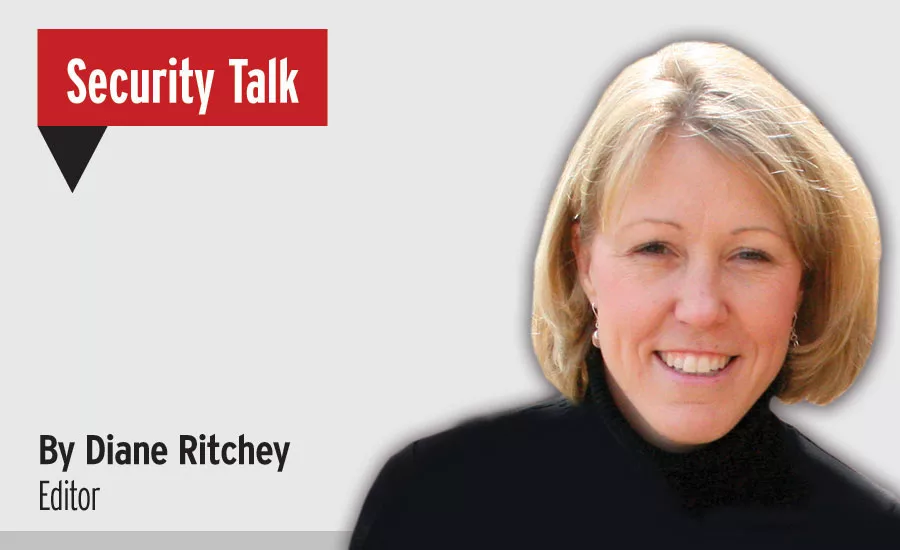Security Talk
Post-COVID-19 and mental health


Almost overnight, COVID-19 jumped in and turned everything upside down. Suddenly, concerns arose about how to stay healthy, how to social distance, lockdowns, how to homeschool our kids, where to find masks or get groceries and other necessary items, and more. There was no playbook.
And it’s just been too much, say mental health experts.
Americans are reporting significant and sustained increases in symptoms of depression and anxiety related to the COVID-19 pandemic, according to data from Healthline and YouGov’s COVID-19 tracker.
Women, minorities, people with preexisting health conditions and adults under age 34 all reported higher rates of fear and anxiety. The number of people reporting these symptoms are well above historical norms. Whether it is because they’ve lost a job or fear losing one, they’re struggling to piece together money to pay bills, or they’re worried about their health and safety (and of their family members), the continuous onslaught of worry and insecurity is leading to greater mental health issues than before.
Data from the Census Bureau in late May showed that 24 percent of survey respondents showed signs of major depressive disorder three months into the so-called new normal, when asked questions typically used for screening patients for mental health problems. Thirty percent of respondents indicated some generalized anxiety disorder. Symptoms were more frequent among young people, women and low-income individuals. And results varied by region. Iowa, for example, tallied 26 percent of its population showing symptoms, while Mississippi reported 48 percent.
As of this publication, many Americans are headed back to work, either remote or in-person. Which should be good news, right?
The problem, say experts, is that COVID-19 will leave behind a complicated form of grief that will linger — potentially for many years after the immediate crisis has abated.
Returning to work after six weeks or more under the COVID-19 pandemic shutdown can cause differing amounts of emotions – disbelief, fear and even anger – among workers, much like after a disaster.
Now, perhaps more than ever before, it’s important that leaders make employees the focal point and create a safe environment.
Employees will likely be stressed, and employers and co-workers need to watch for signs, to help ensure that the new normal is as “normal” as possible, says Felix Nater, a security management consultant who helps employers implement and manage workplace security strategy and policy with an emphasis on workplace violence prevention.
“Whether your business or organization is small, midsize or large, employers should have a workplace violence prevention mindset [as employees return,]” Nater stresses. “Managing risk during this phase will be full of challenges and opportunities. You are apt to find more frequent outbursts, verbal altercations and acts of defiance. Be prepared for an angry workforce.”
Nater suggests that management should step back and find a “neutral zone” that is full of opportunity to assess and evaluate what the “new normal” might look like. It should be a time where rules are not clear and new approaches are required.
He suggests, “Will you anticipate the challenge in taking proactive measures in looking for a proper solution or will you have a reactive, dam the torpedoes, full steam ahead attitude and then miss potential risk mitigation opportunities? Is there room for changing old paradigms of thinking and operating, while still providing for a safe and secure workplace and contending with other security expectations? How COVID-19 return-to-work risk mitigation challenges are handled and how opportunities are strategized will depend entirely on empathy, thoughtfulness and effective leadership. Building new approaches might dictate new ways of encountering business-security decisions, managing risks and preventing escalation of violence to physical acts of violence.”
Creating a new normal will likely include new responsibilities, Nater says, to include leadership being involved in anticipating problems. More workplace violence prevention training will be required, to include de-escalation, seeing warning signs, recognizing risk factors and more, in order to mitigate a potentially volatile workplace environment.
“Supervisors and managers will need to be centers of influence and lead by example in being able to recognize potentially volatile workplace environments and have the backing and ability to mitigate risks on the spot,” Nater says. “Success will be predicated on management’s commitment to provide empathetic leadership while providing for a safe workplace. Treating employees with dignity and respect will take on a different meaning that shows sincerity, care and concern for their well-being.”
Until “a new normal” is gained, returning to work post-COVID-19 may very well be the “new emerging threat.” How will you prepare and respond?
Looking for a reprint of this article?
From high-res PDFs to custom plaques, order your copy today!







